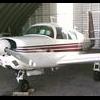Oil Temperature Maxed out
-
Members Online
- FlyingScot
- 201Steve
- tcal780
- jetdriven
- Hector
- cmck
- skykrawler
- kortopates
- Hank
- Danb
- bigmo
- FlyingDude
- Flyler
- KLRDMD
- MikeOH
- Planegary
- PT20J
- sdmideas
- geoffb
- Ragsf15e
- Shadrach
- dzeleski
- Sue Bon
- Matthew P
- Max Clark
- hammdo
- 47U
- shawn-201zb
- GeneralT001
- ericrynehess
- adventuresaviationllc
- Jim F
- exM20K
- WillyT
- OSUAV8TER
- redbaron1982
- jgarrison
- Ethan


Recommended Posts
Join the conversation
You can post now and register later. If you have an account, sign in now to post with your account.